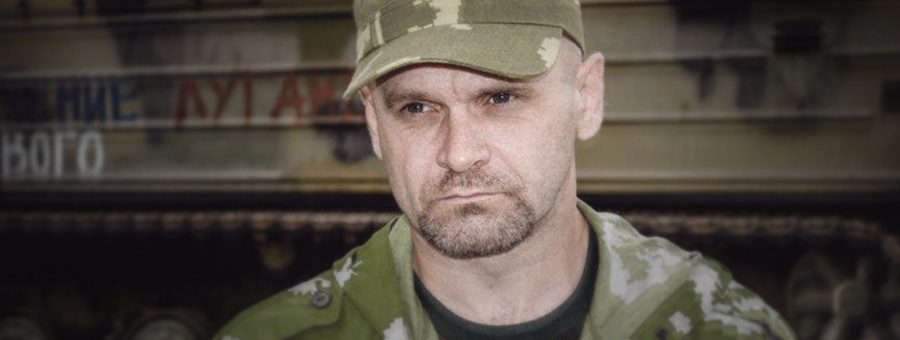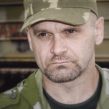
Armed Formations in the Secessionist ‘Luhansk Republic’ (Part Four)
Publication: Eurasia Daily Monitor Volume: 12 Issue: 10
By:

*To read Part One, please click here.
*To read Part Two, please click here.
*To read Part Three, please click here.
Local ataman (historically, a Cossack leader) rule proliferates in the power vacuum of the “Luhansk People’s republic” (LPR). Russian forces seized this area from Ukraine but have failed to contain the ensuing anarchy.
Yevgeny Ishchenko in Pervomaysk:
The “ataman” in charge at Pervomaysk, Yevgeny Ishchenko, arrived there in April from Russia (where he was wanted on manslaughter charges, according to Ukrainian Luhansk province governor Hennady Moskal, re-based in Sieverodonetsk). Ishchenko echoes the other Atamans’ views about the Minsk armistice agreements as invalid, and the “LPR” and its leader, Igor Plotnitsky, as illegitimate. While determined to continue fighting against Ukraine, he has also threatened to “turn the weapons in the opposite direction” (Novosti Novorossii, December 10, 2014; January 3, 2015).
Ishchenko is a junior ally of the Stakhanove-based Ataman Dryomov (see Part Three in EDM, January 16, 2015). They make joint public appearances from time to time and give interviews together for Internet media occasionally. “LPR” authorities in Luhansk have endorsed Ishchenko as acting mayor and town commandant in Pervomaysk (thus “legalizing” him in Luhansk’s eyes), evidently hoping to conciliate him. However, Ishchenko has complained to a rare foreign visitor that Luhansk is systematically withholding food supplies, so as to starve out Pervomaysk and other “self-governing” (i.e. ataman-controlled) towns (The Guardian, January 7, 2015).
Aleksei Mozgovoy in Alchevsk:
Aleksei Mozgovoy’s brigade Prizrak (Ghost), based in Alchevsk and the surrounding district, with an estimated strength of 2,000, does not emphasize a Cossack identity, and keeps aloof both from the Luhansk authorities and from the other autonomous armed formations. During the fighting last summer, Mozgovoy’s brigade was the only force in the “LPR” to cooperate with Igor Girkin/Strelkov’s forces in the Donetsk “people’s republic.” Ousted from the industrial centers of Sieverodonetsk and Lysychansk by Ukrainian forces last August, the Prizrak brigade withdrew to Alchevsk, site of the metallurgical and coke-chemical plants of the Industrial Union of Donbas. The “LPR” police and town commandant retain a symbolic presence in Alchevsk, but Mozgovoy’s formation is fully in control there.
Mozgovoy, a Luhansk native, was a non-commissioned officer in the Ukrainian army, then a guest worker in Russia, joined the pro-Russia rebellion in Luhansk from the outset in April 2014, and built up the Prizrak unit from the platoon to the “brigade” level. Politically, however, he has opposed the “LPR” leadership under both “presidents,” Valery Bolotov and Igor Plotnitsky.
Mozgovoy is considerably more articulate than the other field commanders (or the Luhansk leaders for that matter) and is also the most radical politically. He can hold his own in dialogues with Russian ultranationalist intellectuals on their websites. At one level, Mozgovoy shares the other Luhansk field commanders’ views: disavowing the Minsk armistice agreements, contesting the “LPR’s” legitimacy and that of Luhansk leaders, insisting on the preservation of autonomous armed formations, continuing the fight for Novorossiya. He is the prime advocate of creating a council of field commanders to either replace or duplicate the Luhansk-based authorities.
Beyond war-related issues, Mozgovoy seems to position himself as a social radical of a nationalist-expansionist bent. He calls for removing the “political-financial-oligarchic corrupt authorities” and replacing those with “real people’s power,” nationalization of privately-owned industries, and abolishing elections for the duration of the ongoing war—all of this in the spirit of “Russianness” (Russkost’, not further explained). On that basis Mozgovoy would “liberate the people” of the Luhansk and Donetsk “republics,” of Novorossiya, of Kyiv and Ukraine as a whole, apparently in that order and not necessarily ending there (Novaya Gazeta, November 21, 2014; Luhansk Information Center, December 20, 24, 2014; Novosti Novorossii, December 29, 2014; January 3, 10, 11, 2015).
The Atamanchiks:
Lesser fiefdoms, controlled by smaller but still autonomous armed formations, have sprung up in the towns of Krasnyi Luch and Sverdlovsk (administrative centers of eponymous districts).
Ataman Kozitsyn (see above) had removed the “LPR” authorities from Krasnyi Luch, the foremost anthracite-mining center in nominally “LPR” territory. The commander currently in charge there is identified as Major-General S. Yu. Kosogor, an elected ataman of the Russian Cossack Don Host in that district (presumably the 31st, in Kozitsyn’s telling). The Cossacks have reportedly taken away the lucrative coal trade from the pro-Luhansk authorities in Krasnyi Luch (Novosti Novorossii, January 8, 2015).
In Sverdlovsk, the Cossack chieftain Aleksandr Gaidey apparently broke away from Kozitsyn’s organization. Gaydey’s armed detachment, the “Gaydeevtsy,” headquartered in the captured Ukrainian Security Service (SBU) building, reportedly controls what is legally the Ukrainian side of the Russia-Ukraine border (OstroV, January 8, 2015). Ukrainian Luhansk province governor Moskal (see above) refers to the lesser Cossack or pseudo-Cossack chieftains pejoratively as Atamanchiki.




